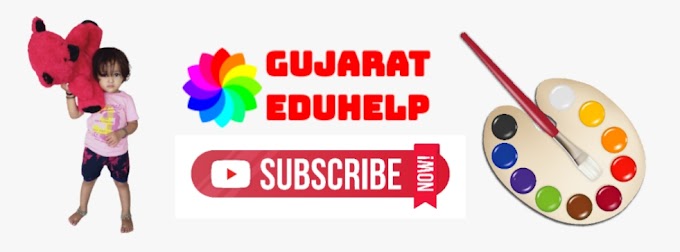Download New Books of Standard 1 To 12 Gujarati Medium
A book is a means of recording information in the form of writing or images, typically consisting of many pages (made of papyrus, parchment, vellum, or paper) joined together and protected by a cover. In the history of portable physical media for extended compositions or written records, the codex replaces its immediate predecessor, the scroll. A single sheet in a codex is a sheet, and each side of a sheet is a page.
The intellectual content of a physical book need not be a composition or even be called a book. Books can consist only of drawings, prints or photographs, or things like crossword puzzles or cut-out dolls.
ધોરણ 7 : ગુજરાતી પાઠ્યપુસ્તક : અહીં ક્લિક કરો.
ધોરણ 6 થી 8 : શ્રીમદ્ ભગવદ્ ગીતા : અહીં ક્લિક કરો.
ધોરણ 5 : અંગ્રેજી : અહીં ક્લિક કરો.
ધોરણ 6 : વિજ્ઞાન અને ટેકનોલોજી : અહીં ક્લિક કરો.
ધોરણ 6 : પલાશ : અહીં ક્લિક કરો.
ધોરણ 8 : ગુજરાતી : અહીં ક્લિક કરો.
In a physical book, the pages may be left blank or may present an abstract set of lines to support ongoing entries, for example, an account book, an appointment book, an autograph book, a notebook, a journal, or a sketchbook.
Some physical books are made with pages thick and sturdy enough to support other physical objects, such as a scrapbook or photo album. Books can be distributed electronically as electronic books and other formats.
Although a monograph is understood in ordinary academic language to be a specialized academic paper, rather than a reference paper on a single academic subject, library and information science monograph more broadly denotes any complete non-serial publication in one volume (book) or a finite number of volumes (including a novel like Proust's seven-volume Inuit of Lost Time), in contrast to serial publications like a magazine, newspaper or newspaper.
A store where books are bought and sold is a bookstore or bookstore. The books are also sold elsewhere. Books can also be borrowed from libraries. Google has estimated that as of 2010, approximately 130,000,000 different titles had been published. In some wealthier nations, the sale of printed books has decreased due to the increased use of electronic books.
ધોરણ 6 વિજ્ઞાન TEXTBOOK PDF
Textbooks are produced to meet the needs of educators, generally in educational institutions. School books are textbooks and other books used in schools. Today, many textbooks are published in both print and digital formats. The history of textbooks goes back to ancient civilizations.
For example, the ancient Greeks wrote educational texts. Johannes Gutenberg himself may have printed editions of Ars Minor, a textbook on Latin grammar by Aelius Donatus. The earliest textbooks were used by tutors and teachers, as well as by individuals who taught themselves.
You May Like: Std-1 To 8 Poems
The Greek philosopher Socrates lamented the loss of consciousness because the means of transmission were changing. Before the invention of the Greek alphabet 2,500 years ago, knowledge and stories were recited out loud, just like Homer's epic poems. New writing technology meant that stories no longer needed to be memorized, a development that Socrates feared would weaken the mental abilities of the Greeks to memorize and retell.
The next revolution in the field of books came with the invention of the fifteenth-century printing press of the changing type. The invention is attributed to the German metalworker Johannes Gutenberg, who cast molds with a molten metal alloy and built a wood screw press to transfer the image to paper.
Gutenberg's first and only large-scale printing effort was the iconic Gutenberg Bible in the 1450s, a Latin translation of the Hebrew Old Testament and the Greek New Testament. Although the Gutenberg Bible itself was expensive, printed books began to spread widely on European trade routes over the next 50 years, and by the 16th century, printed books had become more accessible and less expensive.
While many textbooks were already in use, compulsory education and the resulting growth in schooling in Europe led to the printing of many more children's textbooks. Textbooks have been the primary teaching tool for most children since the 19th century. Two textbooks of historical importance in schooling in the United States were the New England Prime of the eighteenth century and the McGuffey readers of the nineteenth century.
Online and digital materials are making it easier for students to access other materials besides the traditional printed textbook. Students now have access to e-books, online tutoring systems, and video conferences. An example of an ebook is Principles of Biology from Nature Publishing.
In particular, an increasing number of authors are avoiding commercial publishers and instead of offering their textbooks under a Creative Commons or another open license.
Important Link:
Download Books: Click Here

.jpg)








